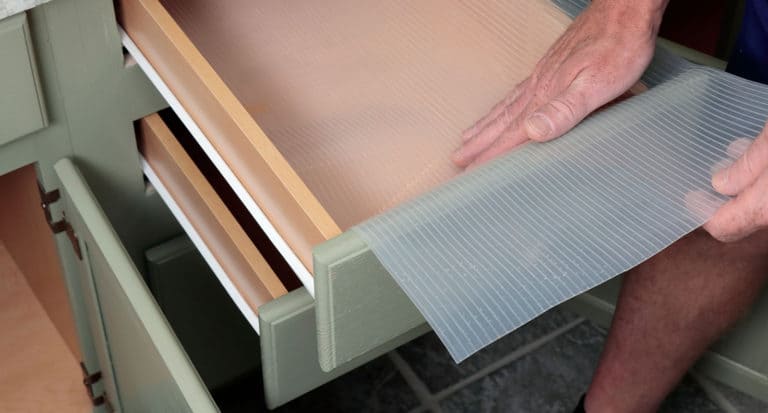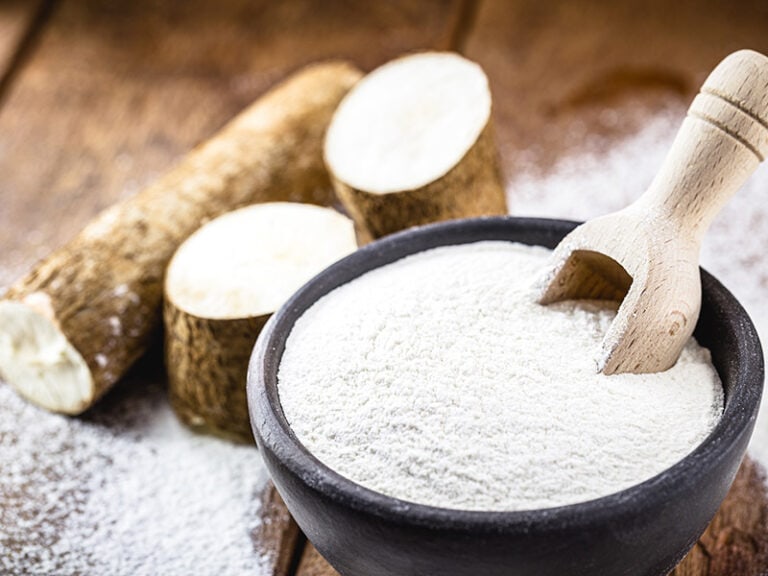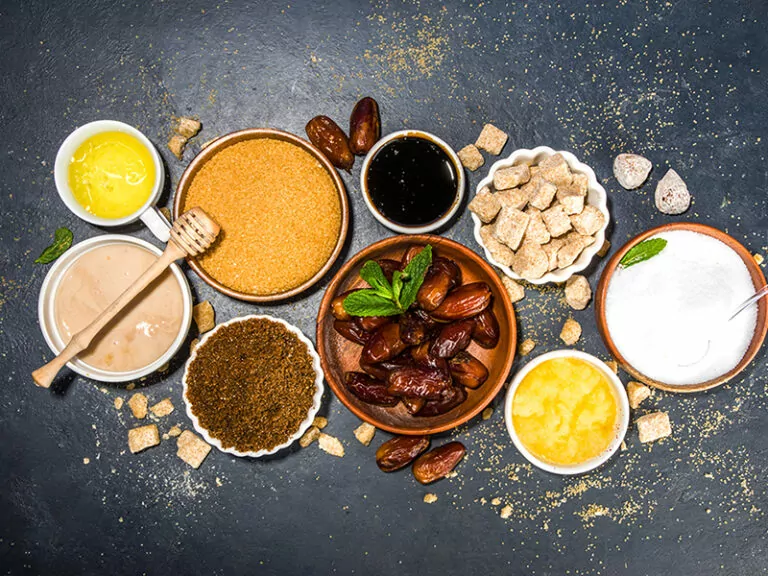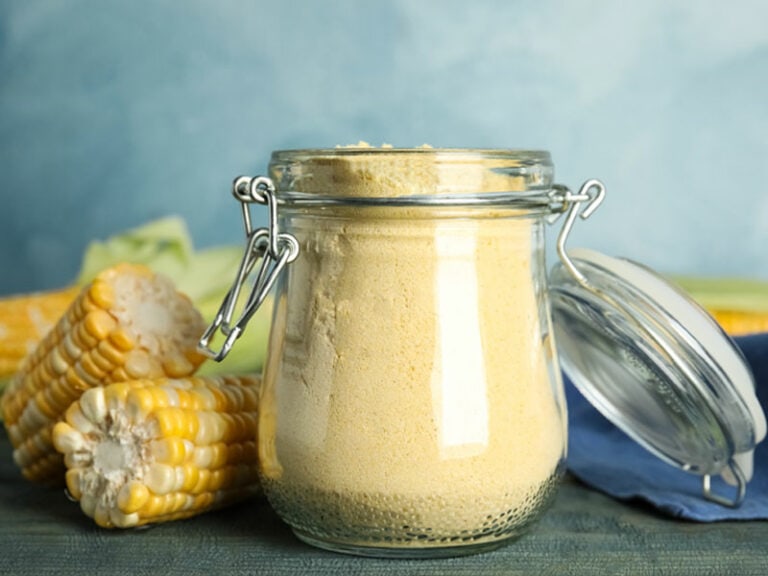Baking cocoa vs. cocoa powder; Need help finding the result for this contest? You don’t need to feel shy because that is a common misconception. Since these two chocolate powders share many similarities, many people quickly consider that the titles mean the same item.
As a result, they would misuse them, and the final baked products would turn out not as good as expected. Unless you want to make the same mistakes, understanding their characteristics is the only way to bring out the best-baked goodness.
Read on because this post will end the confusion once and for all. Besides the critical differences between these powders, you’ll know more about their production process and many delicious recipes to satisfy your sweet tooth.
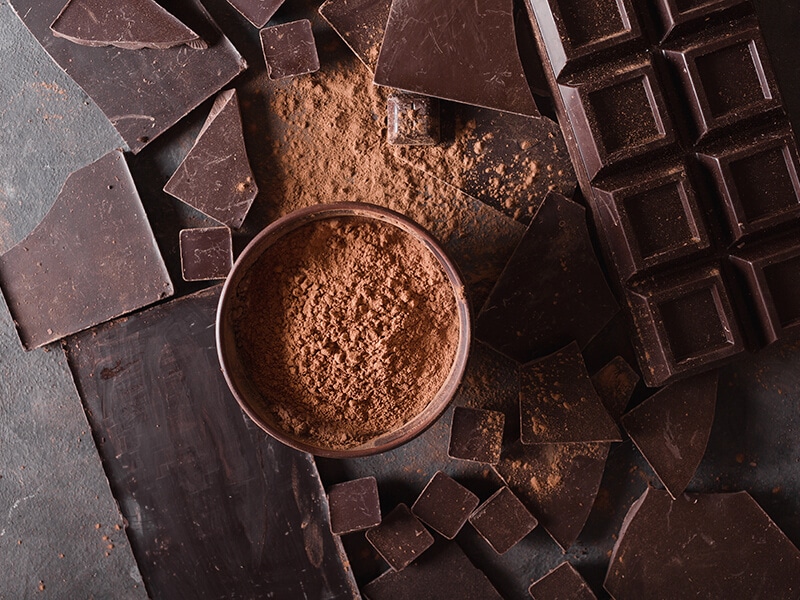
Let’s Learn About Cocoa Powder
“Pure ground cocoa powder” or “ unsweetened cocoa” – can you believe that only one powder has many such names? But that’s the case with cocoa powder. Let’s explore more about this exciting ingredient!
What Is Cocoa Powder?
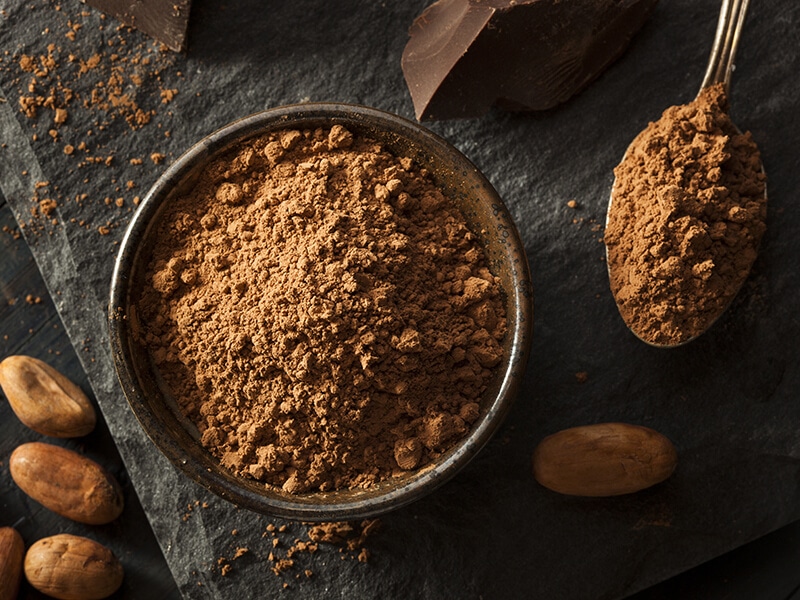
Cocoa powder, or “natural cocoa powder”, first came to the scene in the early 1800s thanks to chemist C.J. van Houten of the Netherlands (1). This invention later laid the foundation of solid chocolate creation and changed the industrial history of chocolate forever.
Technically, this brown powder is made from cacao nibs with almost no cocoa fats. Since it’s unsweetened, this item isn’t a great fit for sweet desserts. These recipes will need extra sweeteners to balance the cocoa powder’s bitterness.
Besides, these brown powders are famous for being challenging to handle. As a hygroscopic (tend to absorb moisture from the surroundings), cocoa powder depends greatly on the moisture upon handling. You’d better seal it tightly in an air container to prevent accelerated spoilage.
Don’t miss this simple yet interesting explanation about cocoa powder’s origin, fat levels, and more!
A Sneak Peek At Cocoa Powder Production
Based on the same principle in the 19th century, the cocoa powder-making process works by roasting fermented cocoa beans at about 212°F – 248°F for 45 – 70 minutes (2). Followed by the roasting are kibbling, grinding, and pressing the beans to extract the chocolate liquor.
These steps will remove all cocoa butter from the nibs until only cocoa liquor is left. This liquid will be dried. Then manufacturers will grind it into a powder. Since no added additives or sweeteners exist, this powder retains cocoa beans’ unique characteristics and raw flavors.
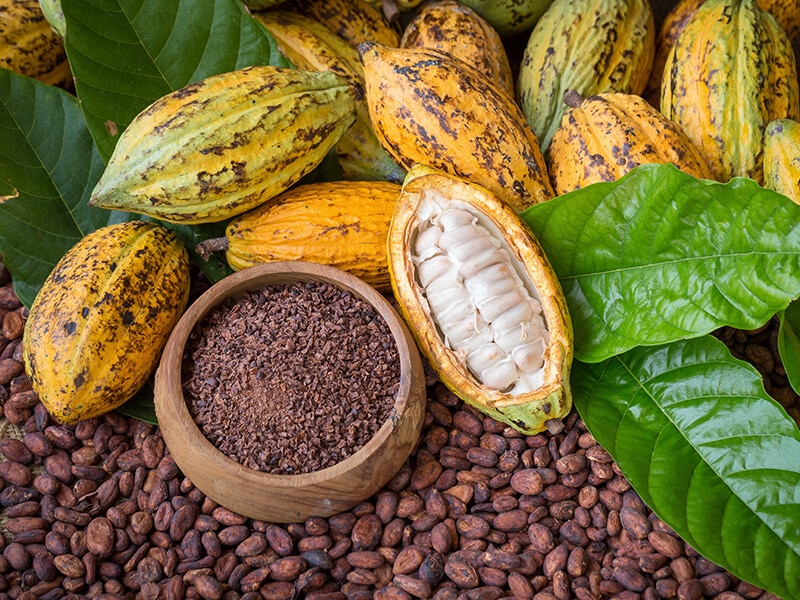
Substitutes For Cocoa Powder
If you’re out of cocoa powder or somehow allergic to this powder, consider some ingredients below to be its substitutions. Worry not, as they are all affordable, and maybe you already have them in the pantry.
Unsweetened Baking Chocolate
Since this ingredient and cocoa powders originate from the same source, cocoa nibs, they work in the same ways and have similar flavor profiles. For every three tablespoons of cocoa powder, alter with two tablespoons of melted unsweetened cooking chocolate.
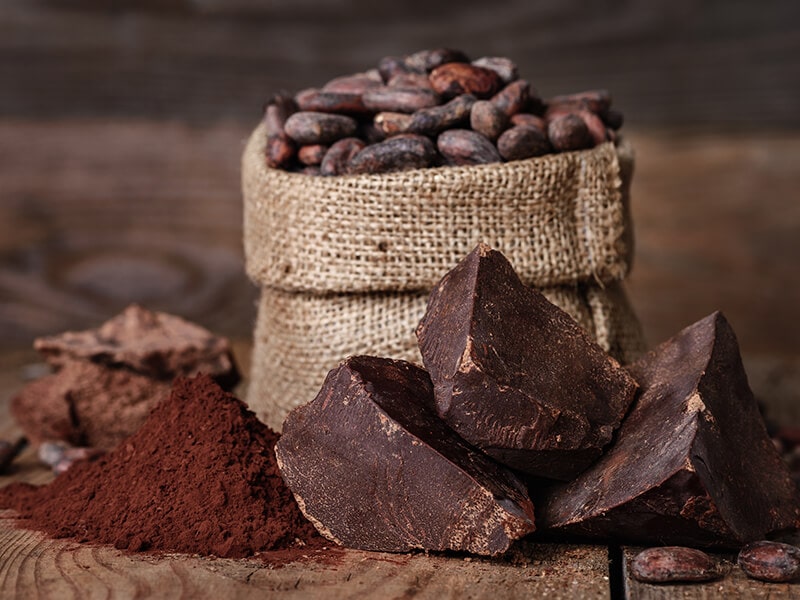
Carob Powder
Among all the substitutes for cocoa powder, carob is the most used. Since they are almost identical in appearance, you can’t tell the difference in the finished product’s coloring. For this replacement, simply swap them in the 1:1 ratio.
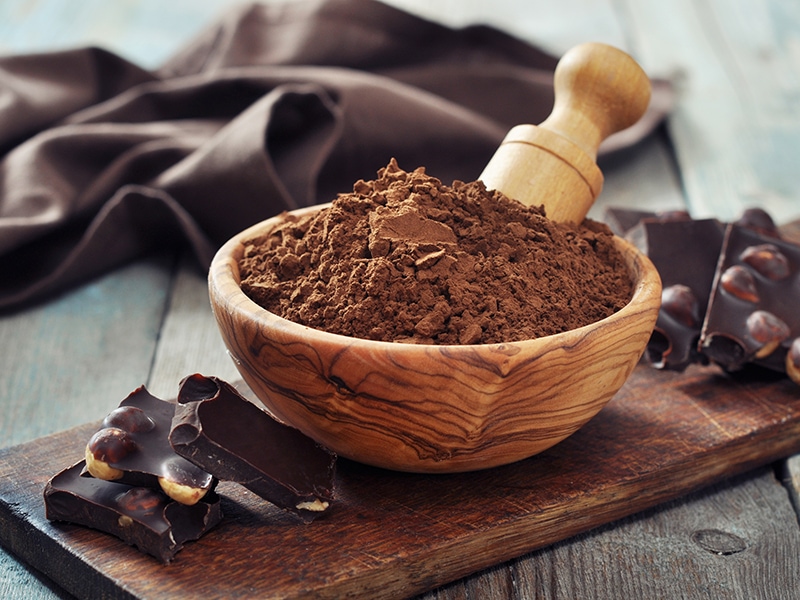
Hot Cocoa Mix
This item is a blend of cocoa powders, spices, milk solids, and sweeteners. Though it doesn’t resemble the flavor of cocoa powder, a hot cocoa mix is acceptable if you are in a pinch. Opt for two teaspoons of hot cocoa mix for one teaspoon of cocoa powder.
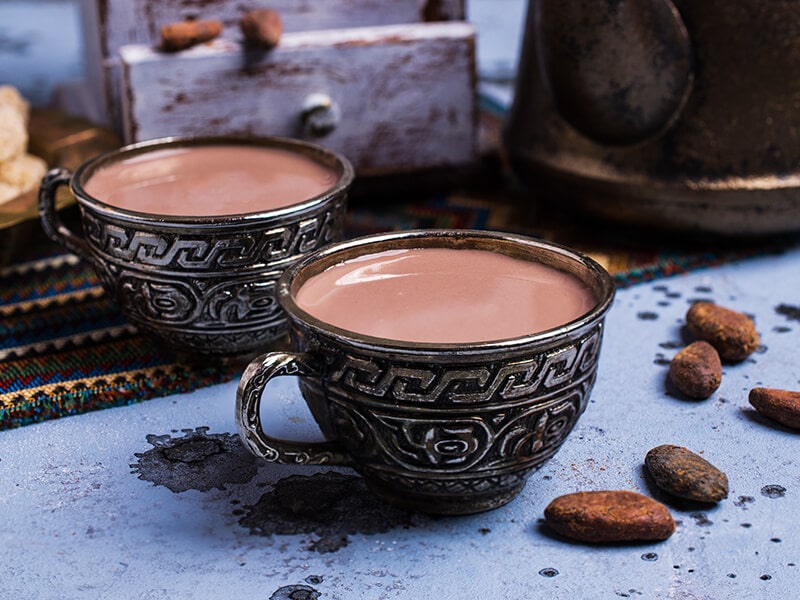
Hot Chocolate Mix
This ingredient has a robust chocolate flavor and thick texture. However, you should lessen the sugary elements in the recipe if using it as a cocoa powder substitute. Similar to hot cocoa mix, the 2:1 ratio also works well with hot chocolate mix.
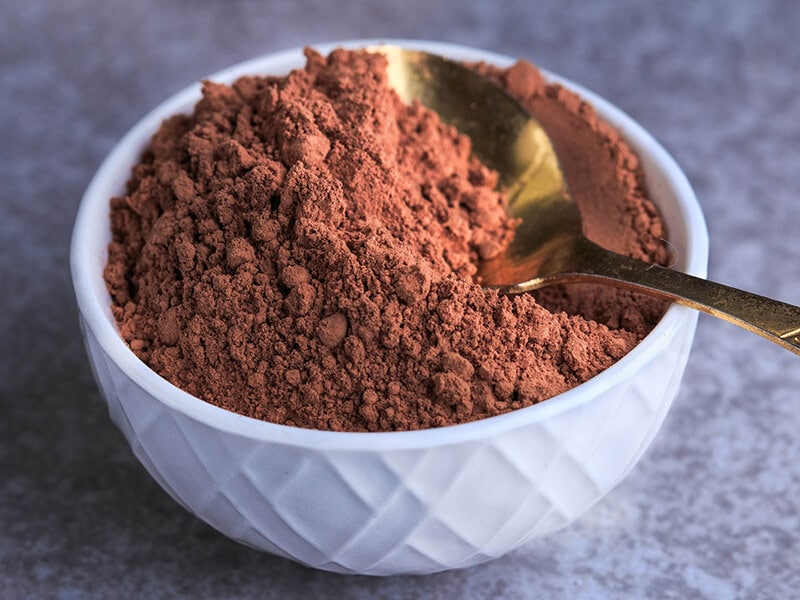
Baking Cocoa 101 – Everything You Need To Know
Coming up next is baking cocoa. Compared to cocoa powders, baking cocoa, also known as “Dutch-processed cocoa powder”, is a lesser-known term. But this ingredient is just as interesting as its counterpart. It will surprise you with many unexpected facts along the way.
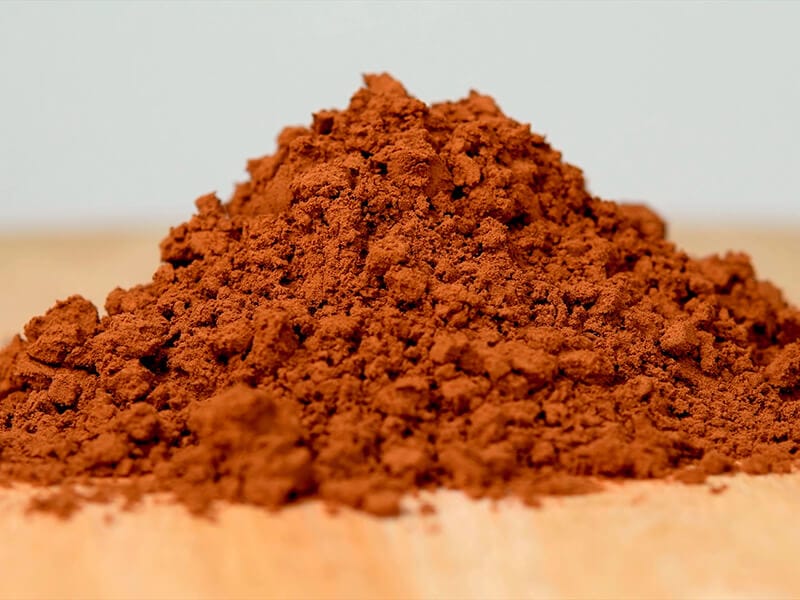
What Is Baking Cocoa?
Interestingly, this item also appears on the market under other names, such as “alkalized cocoa” or “processed cocoa”. Its color will vary from dark brown to black due to the levels of alkalization treatment.
While regular cocoa powder is processed straight from the cacao plant and unsweetened, baking cocoa is washed with an alkalization solution to reduce acidity and on a sweeter side. This additional step changes its entire makeup, from colors to flavors (3).
With that in mind, you may notice that Dutch-processed cocoa doesn’t deliver the bitterness as the original. Some brands add additives like sugars or flavorings during manufacturing, but the Dutch process also already sweetens the powder.
Discover The Process Of Making Baking Cocoa
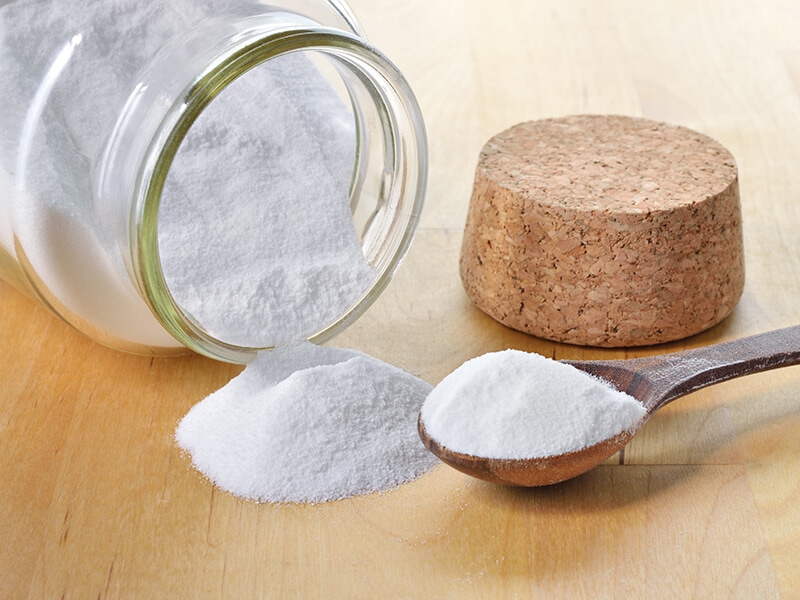
Baking cocoa is a bit more complicated than cocoa powder. Dutch-processed cocoa powder will go through an additional step called alkalization or Dutching. In this step, manufacturers will use a potassium carbonate solution to wash the cocoa beans.
In particular, the cacao nibs will be treated with an alkali, such as potassium carbonate solution, to decrease cocoa’s acidity and raise the pH (4). After the neutralizing step, the beans will undergo the same steps as regular cocoa powder, like roasting and crushing.
As alkalized cocoa is no longer acidic, it won’t react with baking soda/bicarbonate. There will be no chemical reaction to create carbon dioxide, so your dough won’t rise. For fluffy chocolate muffins or cakes, use additional baking powder for the leavening effect.
Understanding more about Dutching when cocoa beans are processed with alkali here.
Baking Cocoa Vs. Cocoa Powder – BrDTheir Characteristics
For bakers, knowing the baking cocoa and cocoa powder characteristics is a must to decide which type should be used in specific baking recipes. Understanding this mentality, I’m proud to present you with a detailed breakdown of these two powders. Check it out now!
Color
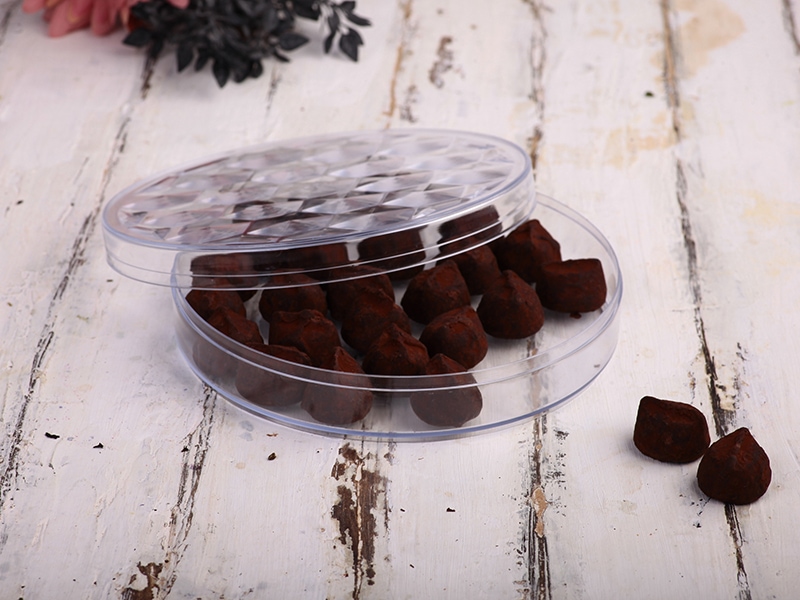
Typically, regular cocoa powder will have a reddish-brown color, making it quite eye-catching on the pantry shelves. Natural cocoa is lighter-color than alkalized, and the difference carries through the dough to the baked finish.
Conversely, by the look, baking cocoa’s color ranges from dark brown to black. This is because the quantity of alkalizing agents will affect the brown shades of the products. As a result, items with higher concentrations of alkalizing agents will carry a darker color.
Learn more about Dutch-processed cocoa and the secret behind its diverse colors here.
Texture
Texture-wise, baking cocoa is the winner due to its smoothness and innate ability. The cocoa alkalization gives it a smoother texture and high liquid absorption ability. Accordingly, it’s easy to dissolve the Dutch-processed into milk or water, given hot or cold recipes.
Meanwhile, since 75% of cocoa butter has been removed, cocoa powder has a sharper texture and no creaminess. Therefore, it doesn’t dissolve easily in room-temperature liquid and is unsuitable in cold recipes with no heat to bloom the powder.
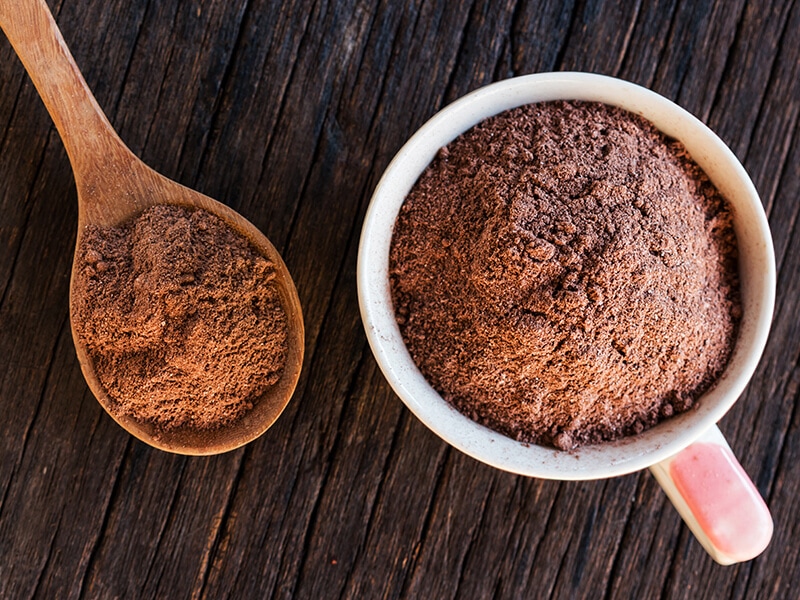
pH Levels
Though they come from the same cocoa source, their acidity level is different, owing to the neutralizing wash. The acidity of regular cocoa powder is relatively high, with an average pH between 5 and 6. Meanwhile, baking cocoa is less acidic, with a pH ranging from 7 to 8.
Alkalisation Treatment
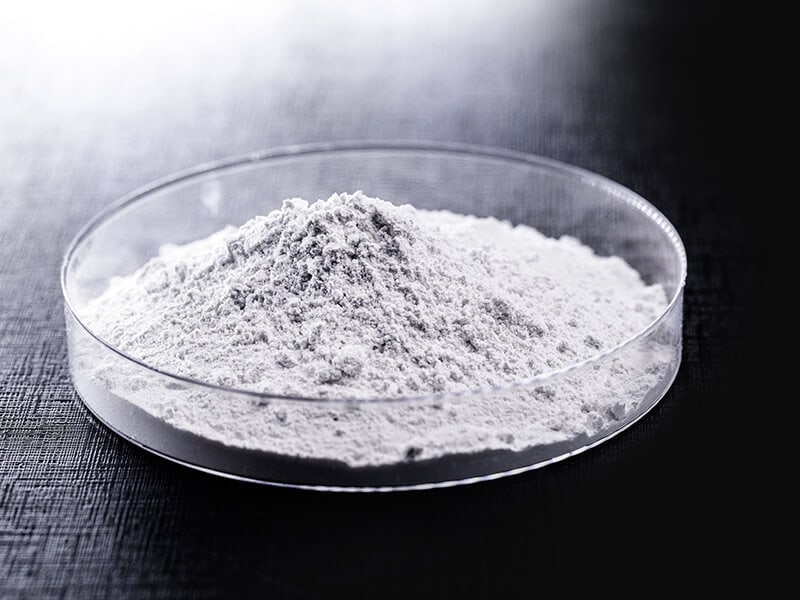
Cocoa alkalization is the leading cause of the differences between Dutched and natural cocoa powder. While the first one undergoes the alkalization process, the latter doesn’t receive the same treatment.
Look at the ingredient list to check whether your chocolate powder is natural or Dutch. Natural cocoa powder has zero added elements, so only one ingredient will be listed. On the contrary, if you see names such as potassium carbonate, your powder has been alkalized.
If you think baking cocoa is interesting and are looking for some of its best products on the market, check this out!
Flavor
Due to the high acidity, the unsweetened cocoa will bring a unique character to your recipe with a deep chocolate flavor and a strong acidic undertone. For some chocolate fans, its bitterness and astringency are to die for.
Overall, alkalized cocoa may be preferable to most people’s taste buds. Baking cocoa carries a sweeter taste with no acidity and a milder chocolatey flavor than its counterpart.
Flavanols are the secret behind cocoa bitterness, and the alkali wash has eliminated them(5). Therefore, the sweetness of baking cocoa may be a plus point compared to the bitterness of natural cocoa for some people.
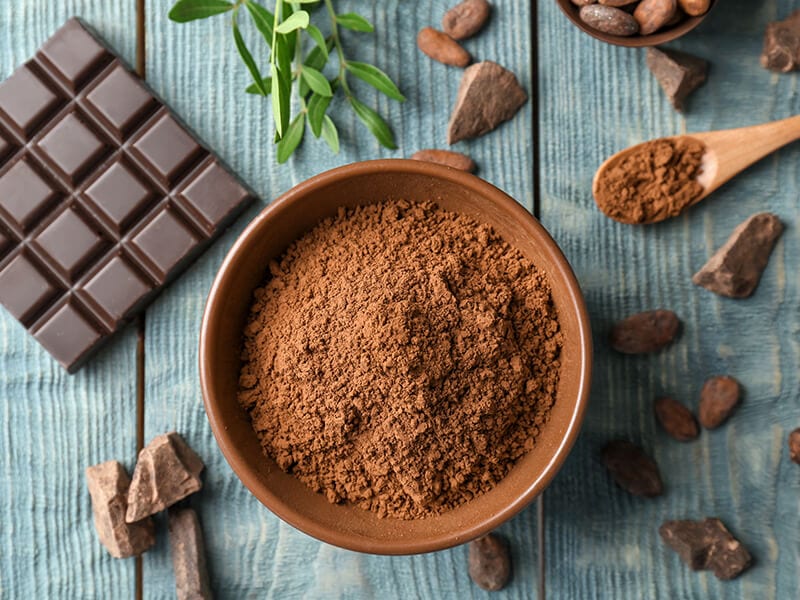
Price
Regarding price, natural cocoa is the winner. The cocoa alkalization adds more value to the baking cocoa since this process requires additional work and ingredients. Therefore, it’s reasonable that the Dutched one will be more expensive than cocoa powder.
If you want more detail about why Dutch-processed cocoa prices are higher than natural cocoa, find the answer here.
Usage
There is a lot to discuss about cocoa powder and baking cocoa’s usage. They have many roles in the culinary world, and you’ll be surprised to know that one of them is an excellent element to add to your daily smoothies.
Cocoa Powder
Instead of being a flavor enhancer, it acts more as a leavening agent in baking. Specifically, when natural cocoa (an acid) meets baking soda (an alkali), they create a chemical reaction to help the dough rise, especially in fluffy recipes such as muffins or cakes.
Baking aside, its acidity and bitterness are not suitable for sweet or creamy desserts since you’ll need to go extra with sweeteners to balance the overall flavor. Therefore, it will be a more excellent match for dishes on the savory side.
Since cocoa powder doesn’t work well with cold recipes, it isn’t the best choice for milkshakes, cocktails, or smoothies. Instead, these reddish-brown granules work better with hot chocolate. For raw consumption, it would be an excellent topping for your ice cream.
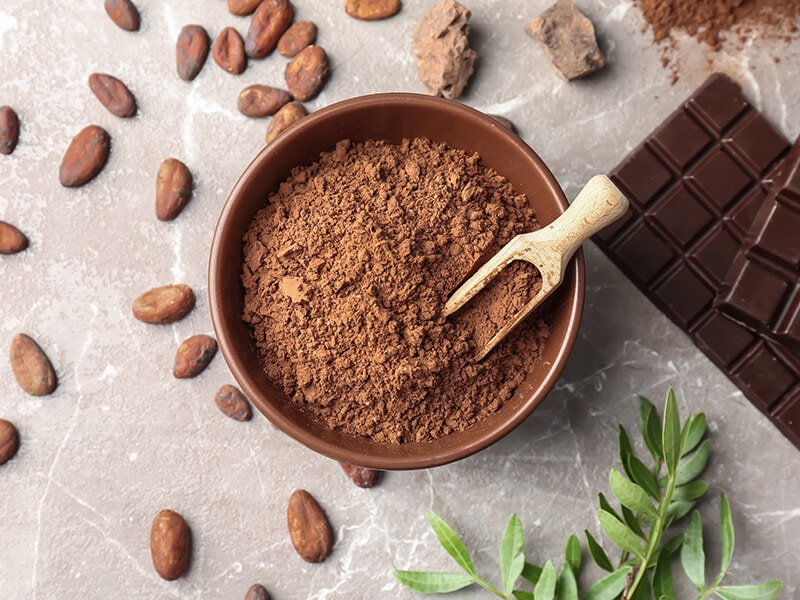
Baking Cocoa
As its name suggests, baking cocoa is perfect for baked goods. Due to the number of additives such as flavorings and sugar, the Dutch-processed has a pleasant bittersweet flavor. Moreover, the powder dissolves faster, making it flexible in many sweet recipes.
From taste and texture, baking cocoa shines most in the bakery world. Why not use it all the time? The problem is that your recipe needs help from baking powders (an acid) because baking cocoa (an alkaline) alone is insufficient to make the dough rise.
Still, it can handle recipes that don’t call for rising effects, such as brownies or chocolate pudding, without additional leavening agents. Moreover, baking cocoa is flexible in cold and hot liquids, unlike cocoa powder. Feel free to add it to your morning smoothie or milkshake.
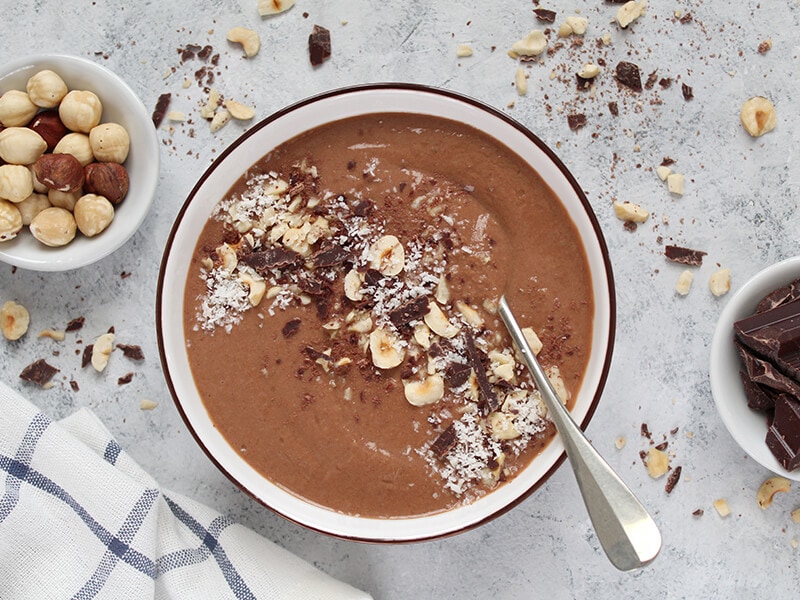
Nutritional Values
Generally, alkalized cocoa is not as healthy as regular cocoa powder. One tablespoon of cocoa powder contains nearly 3g of carbohydrates, higher than baking cocoa with only 2g. The Calcium content of baking cocoa is lower at 0,8mg compared to the 7mg of its counterpart(6).
Moreover, due to the alkalization wash, the Dutch-processed lacks flavonoid phytonutrients. This substance is beneficial for treating inflammation and hinders the development of cancer, diabetes, or heart disease.
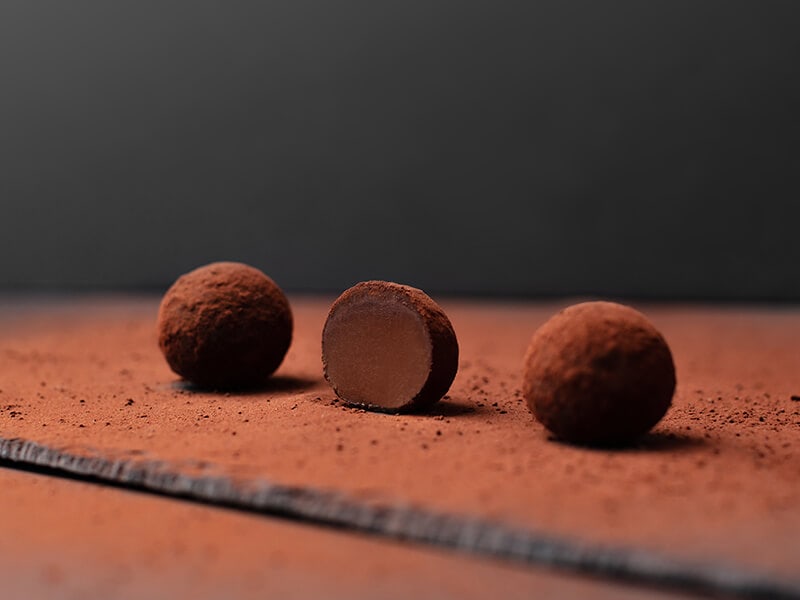
Cocoa Powder And Baking Cocoa’s Interchangeability
Cocoa powder and baking cocoa have their roles in recipes. Furthermore, they must be accompanied by different components to provide the best baking results, so it’s not simple to substitute them in every dish.
Can Cocoa Powder And Baking Cocoa Substitute Each Other?
These two chocolatey powders differ in chemical structures, liquid absorption, and flavor profiles. Therefore, be careful when applying them in certain circumstances. While cocoa powder needs a solid alkaline, baking cocoa requires more acids to create the rising effect.
That is to say, if the recipes call for no rising agents, such as chocolate pudding or brownies, using cocoa powder and baking cocoa interchangeably is acceptable. Still, you’ll need a specific ratio to make the magic work with dishes that require baking powder or baking soda.
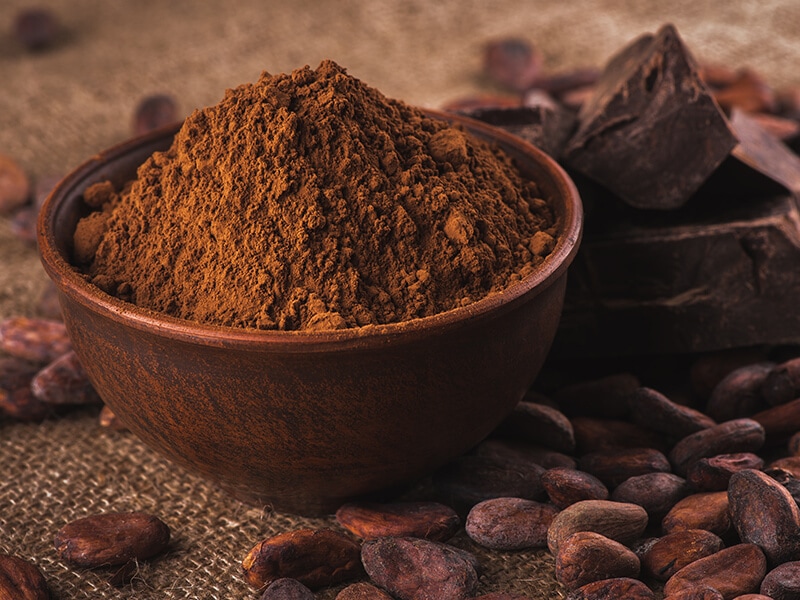
Tips To Replace Baking Cocoa With Natural Cocoa Powder
You’re free to replace Dutch cocoa with cocoa powder in recipes requiring baking cocoa and baking powder. The 1:1 ratio works just fine with these two chocolate powders. Still, a boost of alkali is necessary to get the same rising effect.
Therefore, remember to add ⅛ teaspoon of bicarbonate soda for every three tablespoons of cocoa powder. If bicarbonate soda is out of hand, it’s OK to substitute it with lemon juice, cream of tartar, or vinegar with the same amount.
On the other hand, if you want to avoid adding more alkalized elements to the recipes, try two tablespoons of baking cocoa instead of three tablespoons of cocoa powders.
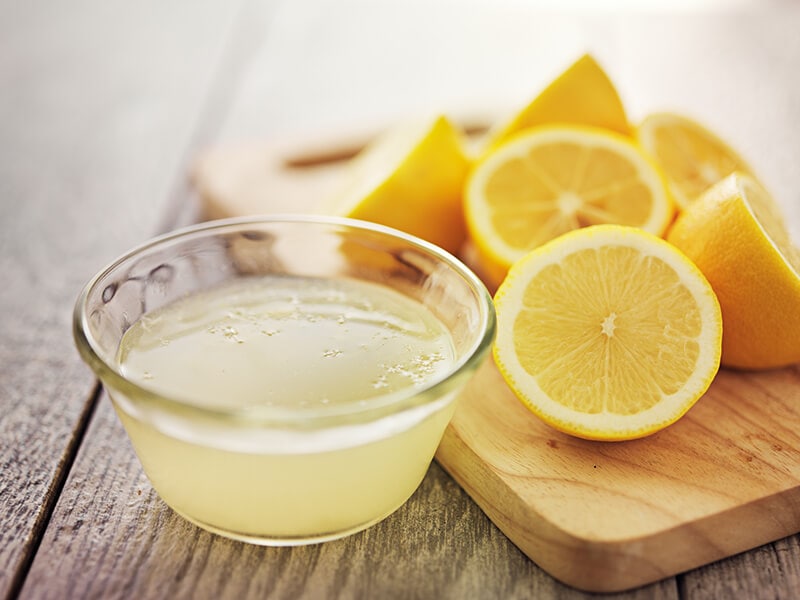
What About Swapping Natural Cocoa Powder With Baking Cocoa?
It’s also possible to use baking cocoa in cocoa powder recipes, but be mindful that the finished taste won’t be as chocolaty as the original. If you still keep the same thoughts, follow this ratio: ½ teaspoon of cocoa powder to ⅛ teaspoon of baking cocoa.
After all, it’s better to stick with the original ingredient in the recipe. In baking, a small mistake about ingredients can go a long way. Thus, alternating between these two powders can affect your baked goods’ overall flavor and texture.
Which Type To Use If A Recipe Only Says “Cocoa”
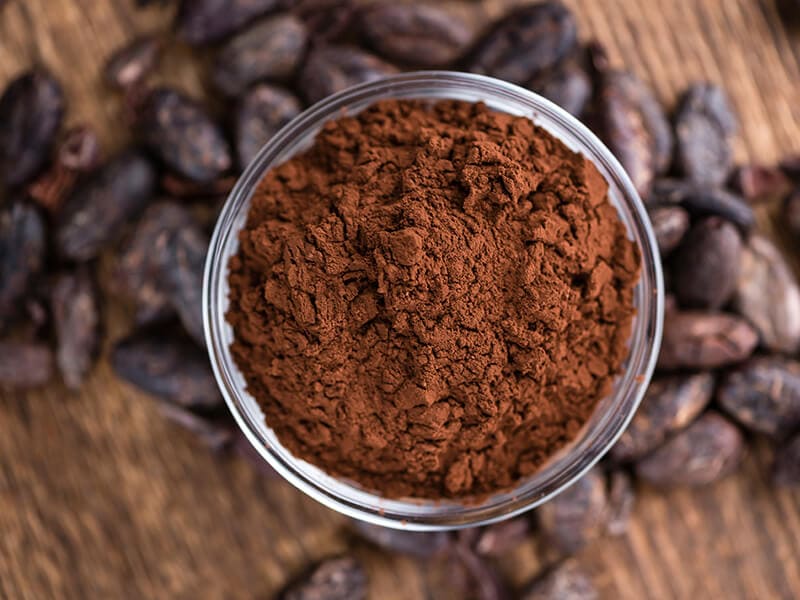
Chances that you may encounter recipes that simply say “cocoa” without added information like “natural” or “baking”. So what are you going to do? Follow my instructions, and you’ll never go wrong.
When the recipe only mentions “cocoa powder” or “cocoa,” the best move is to go for natural cocoa. Historically, baking cocoa has solely been widely used since the mid to late 20th century. Hence, classic American recipes before that time referred to natural cocoa powders.
At the same time, recipes with baking powders or baking soda are more straightforward. Use natural cocoa powder when you see baking soda in the ingredient list. Similarly, opt for Dutch-process powder if the name baking powder appears.
Baking cocoa vs. cocoa powder – what is the better choice for chocolate cakes? Find the result here.
Best Recipes With Baking Cocoa And Cocoa Powder To Try At Home!
If you already have baking cocoa and cocoa powder on the shelf, why don’t you give these recipes a go? Or even better, be more adventurous and substitute these powders with each other to see how far things could go.
1. One Bowl Cocoa Brownies
Thick, soft, 100% delicious, and super easy to make, these one-bowl cocoa brownies are flavor bombs. Though cocoa powder steals all the spotlight, cheap-priced and basic ingredients like eggs, butter, or brown sugar are worthy co-stars. Best of all, one bowl means less washing up.
2. Chocolate Frosting
If you’re a baking enthusiast, note down this chocolate frosting recipe because you can apply it to multiple bakery goods. Preparing this frosting a night before is acceptable. When the time comes, just let the frosting sit at room temperature for 30 – 60 minutes before using it.
3. Chocolatey Nutella Macarons
There’s no way you can pass by these lovely chocolatey Nutella macarons. Even better, in this recipe, you’ll learn to make homemade chocolate Nutella buttercream. Dutch-processed cocoa, or baking cocoa, plays a critical role in both the macarons and the cream.
4. Black Forest Ice Cream Sandwich Recipe
These ice cream sandwiches are the beginning level of any baker, and I’m sure you will have a successful batch on the first try. With a few ingredients and more or less 24 minutes, these black and pink sweets are ready to be a part of your holiday feast.
FAQs
The above information must have given you enough knowledge to choose the right powder in specific baking recipes. But if you still have unsolved wonders about these chocolatey granules, scan through the related questions above because they might help.
End Your Confusion About Baking Cocoa And Cocoa Powder!
Now you have figured out all the essential characteristics of baking cocoa and cocoa powder. Choosing which type to use in recipes is no longer a challenging task for you.
The best part is knowing how to use them will open a world of creativity in the kitchen. However, baking cocoa powder will be a safer choice for novice bakers.
Please spread this article to anyone confused about these two types of powder. And if you have any exciting tips about using these powders, don’t hesitate to share them with other readers and me in the comments. Stay tuned for more great updates!
References
- Coenraad van Houten (2019) CHOCOLATE: Food of the Gods – Online exhibitions across Cornell University Library.
- Cocoa powder: Baking ingredients (2021) BAKERpedia.
- Alasti, F.M. et al. (2020) The influence of three different types and dosage of alkaline on the inherent properties in Cocoa powder, Journal of food science and technology. U.S. National Library of Medicine.
- JP2005304332A – crushed cacao, cacao extract, cacao beverage, and method for producing the crushed cacao (no date) Google Patents. Google.
- Miller KB; Hurst WJ; Payne MJ; Stuart DA; Apgar J; Sweigart DS; Ou B; (no date) Impact of alkalization on the antioxidant and flavanol content of commercial cocoa powders, Journal of agricultural and food chemistry. U.S. National Library of Medicine.
- Cocoa powder (unsweetened) (no date), Calories in 1 tbsp of Cocoa Powder (Unsweetened), and Nutrition Facts.

